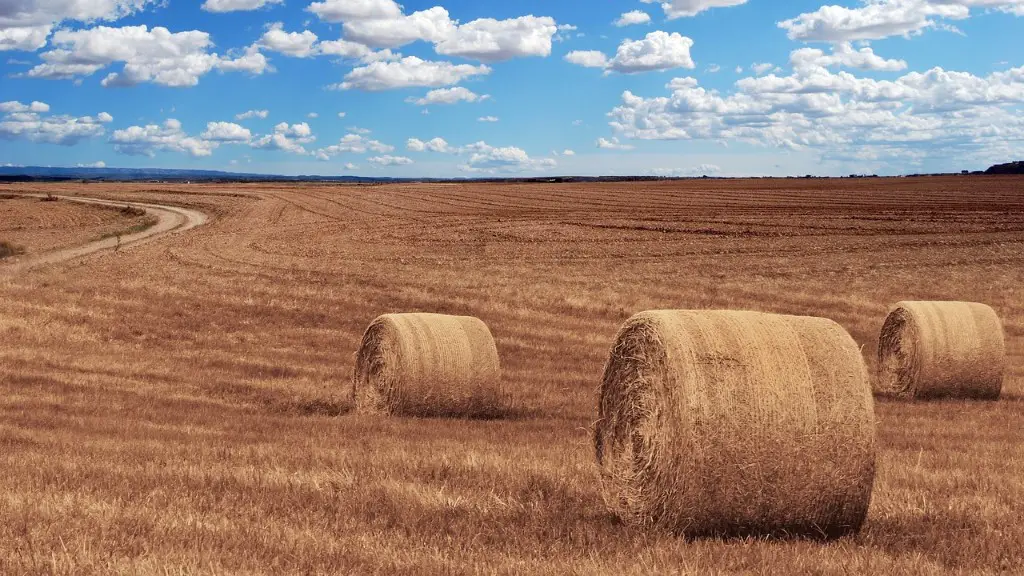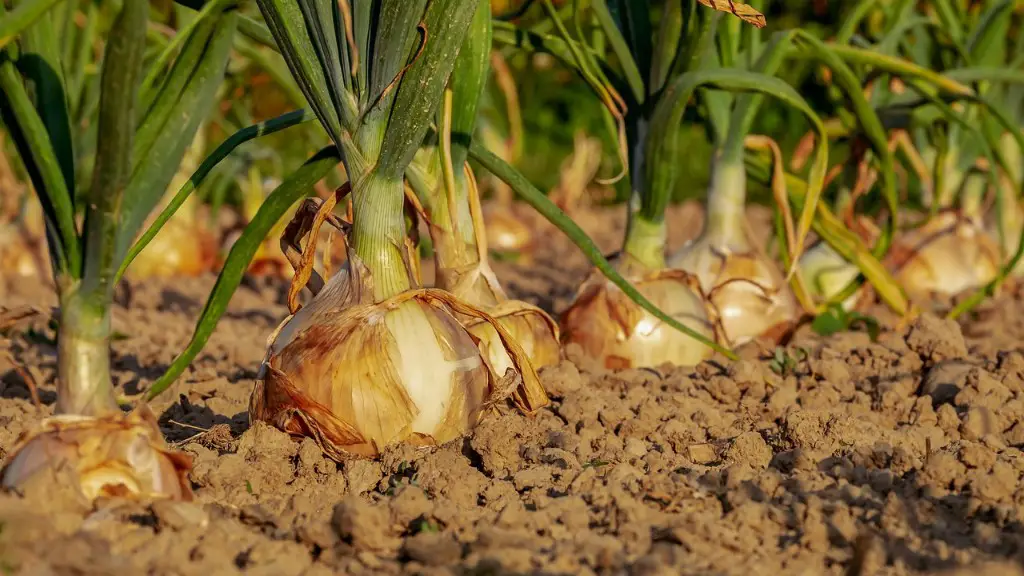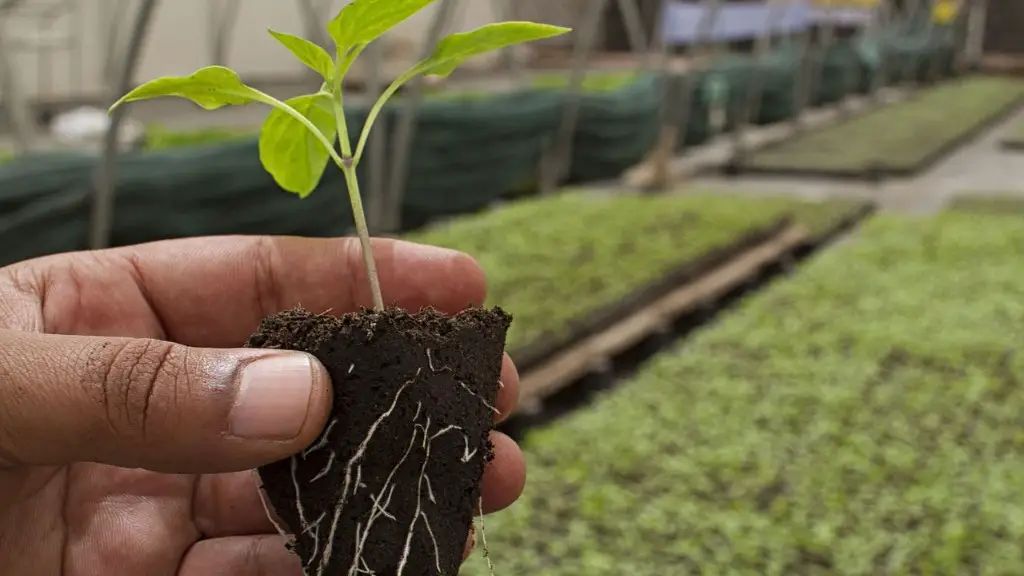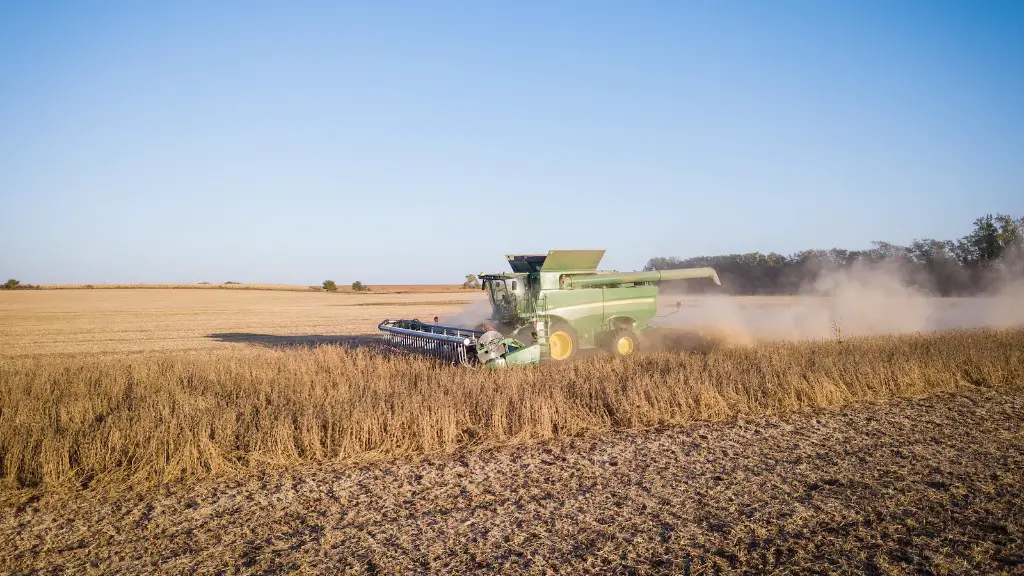Climate change is one of the most pressing global challenges of our time. Agriculture contributes to climate change in a number of ways. Greenhouse gas emissions from agricultural production, including methane from livestock and nitrous oxide from fertilizer, account for approximately 10 percent of total global emissions. additionally, agricultural production is a major source of deforestation, which also contributes to greenhouse gas emissions.
Over the past several decades, agriculture has become increasingly intensive, with more land being cultivated to produce larger quantities of food. This has put additional pressure on the natural resources that support agriculture, and has contributed to climate change in a number of ways.
Intensive agriculture depletes the soil of nutrients, leading to soil erosion and degraded soil quality. This degraded soil is then less able to store carbon, which contributes to atmospheric carbon levels and climate change. Additionally, the heavy use of water for irrigation can lead to drought, as well as to contamination of water sources with chemical pollutants.
The impact of climate change on agriculture is complex. Changes in temperature and precipitation patterns will affect the timing and availability of water for irrigation, as well as the growth and yield of crops. Extreme weather events, such as floods and hurricanes, can damage crops, disrupt transportation and trade, and lead to food
Agriculture contributes to climate change through emissions of greenhouse gases, such as carbon dioxide, methane, and nitrous oxide. These emissions result from activities such as livestock production, fertilizer use, and land-use change. Agriculture also plays a role in climate change through the clearing of forests and other vegetative cover, which can lead to increased atmospheric concentrations of greenhouse gases.
How does agriculture affect climate change?
There is a lot of potential for reducing greenhouse gas emissions and increasing carbon sequestration through changes in agricultural production. Farmers can change their production practices or land use to increase the carbon stored in soil or vegetation. These changes can have a big impact on the environment and climate.
The main sources of agricultural greenhouse gases (GHGs) are carbon dioxide (CO2) from tropical deforestation, methane (CH4) from livestock and rice production, and nitrous oxide (N2O) from fertilizing or burning croplands. Agriculture is responsible for about half of global methane emissions.
How is agriculture affecting the environment
Agriculture is the leading source of pollution in many countries. Pesticides, fertilizers, and other toxic farm chemicals can poison fresh water, marine ecosystems, air, and soil. They also can remain in the environment for generations.
Toxic chemicals used in agriculture can enter the environment through several pathways. They can be released into the air as emissions from agricultural production and processing facilities. They can also leach into groundwater and surface water, or be carried by wind and rain into sensitive ecosystems such as wetlands, streams, and lakes.
Agricultural pollution can have severe impacts on human health, wildlife, and the environment. It can contaminate drinking water supplies, damage crops and livestock, and cause respiratory problems in people.
The large-scale, conventional farming system is not sustainable in the long run. It contributes to climate change, pollutes air and water, and depletes soil fertility. We need to find ways to produce food that are more environmentally friendly and sustainable.
Is agriculture worst for climate change?
Factory farming is one of the main contributors to climate change, as it releases vast quantities of greenhouse gases into the atmosphere. These gases contribute to the greenhouse effect, trapping heat and causing the Earth’s temperature to rise.
Factory farming is intensive, meaning that animals are kept in cramped conditions and given little space to move around. This results in high levels of stress and anxiety, which leads to the animals producing more methane. Methane is a powerful greenhouse gas that is 25 times more potent than carbon dioxide.
As well as methane, factory farms also produce large amounts of manure, which emits nitrous oxide, another potent greenhouse gas. The high levels of methane and nitrous oxide produced by factory farms are having a devastating impact on the planet, and we urgently need to find a way to reduce these emissions.
Industrial agriculture has a number of disadvantages that include deforestation, soil degradation, water pollution, and climate change. Intensive farming practices can lead to soil degradation and the expansion of new lands. This can have a negative impact on natural habitats. Pest and weed resistance to chemicals can also be a problem.
How does agriculture pollute the atmosphere?
Agriculture is one of the main sources of air pollution, especially in developing countries. Smoke from slash and burn agriculture, and the production of silt, ash, and soil dust from activities like tillage, transporting, and harvest, contaminate the air with particulate matter. These particles can cause a number of health problems, including respiratory tract infections, bronchitis, and heart disease. In addition, agriculture contributes to the production of greenhouse gases, which contribute to climate change.
Agriculture has had a profound effect on the environment. Five of the most significant environmental effects of agriculture are soil fertility loss, eutrophication of water bodies, deforestation, climate change and pesticide pollution.
Soil fertility loss is one of the most serious environmental effects of agriculture. It occurs when the nutrients in the soil are depleted faster than they can be replenished. This can lead to a decline in crop yields and ultimately to soil degradation and desertification.
Eutrophication of water bodies is another significant environmental effect of agriculture. It occurs when excessive nutrients from agricultural run-off enter water bodies, resulting in the overgrowth of aquatic plants and algae. This can cause water quality problems, such as reduced oxygen levels, which can be harmful to fish and other aquatic organisms.
Deforestation is another major environmental effect of agriculture. It occurs when trees are cleared to make way for farmland. This can lead to soil erosion, loss of biodiversity and climate change.
Climate change is another significant environmental effect of agriculture. Agriculture contributes to greenhouse gas emissions, which are one of the main drivers of climate change. Agriculture also alters the land surface, which can affect local climate.
Pesticide pollution is another environmental effect of agriculture
Are there any negative effects of agriculture
The government has implemented financial assistance programs that enable farmers to reduce their GHG emissions from agriculture. These programs help farmers by providing funding to offset the costs of reducing their emissions. The programs also provide education and technical assistance to farmers to help them implement practices that will reduce their emissions.
We need to set the table to address the triple challenge of feeding a growing population, providing a livelihood for farmers, and protecting the environment. We can only make sustainable progress if we take a holistic approach to tackling these challenges.
Is agriculture the biggest polluter?
It is possible that agriculture is the world’s biggest polluter because it uses a lot of water and land. EU farms use 173 million hectares of land for agricultural production, while the US farms use up to 370 million hectares. This means that agriculture accounts for a large percentage of land use, and therefore a large percentage of water use. Considering that agriculture uses 70% of the world’s water supply, it is not surprising that it is also the biggest polluter.
While agriculture can have negative impacts on the environment, it can also have positive impacts. For instance, agriculture can trap greenhouse gases within crops and soils, or mitigate flood risks through the adoption of certain farming practices.
Is agriculture a major polluter
Agricultural pollution is a big problem because it can come from so many different sources. Nitrogen-based fertilizers produce potent greenhouse gases and can overload waterways with dangerous pollutants. Chemical pesticides with varying toxicological effects can contaminate our air and water or reside directly on our food. All of these things can have a negative impact on our health.
There are two major problems in agriculture: the loss of agricultural land and the decrease in the varieties of crops and livestock produced. Agricultural land is being lost due to development, the conversion of farmland to other uses, and soil erosion. The decrease in the varieties of crops and livestock is due to the loss of traditional knowledge and the increase in the use of monoculture. Monoculture is the cultivation of a single crop or livestock species, which decreases the diversity of plants and animals on a farm. This can lead to a decrease in the overall health of the ecosystem and make the farm more vulnerable to pests and diseases.
What is the negative effects of sustainable agriculture?
There are pros and cons to using machinery in sustainable agriculture. On one hand, using fewer machines can help reduce your carbon footprint and be more sustainable. However, this can also lead to less production, as you’ll need more time and manpower to do things by hand. Weigh the pros and cons before making a decision on what’s best for your farm.
Agriculture has a range of disadvantages that can have negative effects on both the environment and the farmers themselves. Deforestation, for example, can destroy natural habitats and lead to soil degradation. Intensive farming practices can also cause soil degradation and lead to the expansion of new lands. Pest and weed resistance to chemicals can also lead to water pollution and climate change.
Warp Up
Agriculture is estimated to contribute to about 10% of global greenhouse gas emissions. The main contributors are emissions from livestock (methane and nitrous oxide), rice cultivation (methane), and deforestation (carbon dioxide).
The agricultural sector is a significant contributor to climate change. It accounts for around 10% of global greenhouse gas emissions, with emissions from livestock and crop production contributing the most. The sector is also responsible for around 70% of deforestation, which further exacerbates climate change. Agricultural practices need to be urgently reformed in order to reduce emissions and help mitigate climate change.





